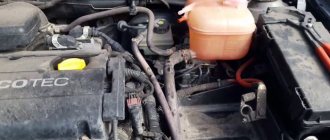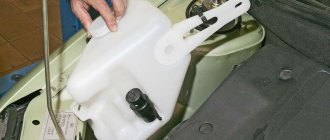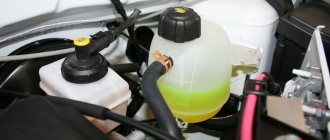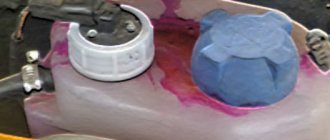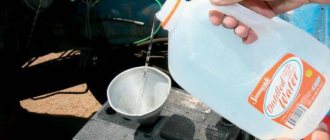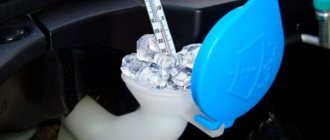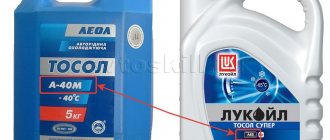Hello, dear friends! As part of our material today, I’ll tell you how to drain water from the washer reservoir and what may be required for such tasks.
Winter is approaching, and therefore before the onset of cold weather it is better to fill it with fresh and high-quality anti-freeze. We have already talked to you about choosing the best anti-freeze for your car, so just follow the link and read our previous material. It will be interesting and very useful.
Yes, the easiest way to drain the washer fluid is to dismantle the tank and pour out all the residue. But it is not always possible to easily remove the knot. The reason lies in difficult access to the tank on some cars, or because the liquid is simply frozen.
How to stop before the stop line: penalties for violation
- the water in the washer is frozen, and frozen water cannot be used in any way;
- if it is ordinary water, when the temperature drops it can cause serious problems;
- tap water clogs the windshield washer nozzles;
- There are often fakes on sale that are best removed from the system immediately;
- if mixed incorrectly, a chemical reaction may occur and the antifreeze will turn into jelly;
- there is a possibility of failure of the washer motor;
- The liquid is old and no longer copes with its tasks.
There are more than enough reasons. Therefore, the driver will have several compelling arguments in favor of draining the old fluid and pouring new fluid into the tank.
Many people don’t want to dismantle numerous components just to get to the washer tank and pour out all the remnants of the composition.
Therefore, it is important to look for alternative ways to solve this issue. Please note that every car is different and may have a slightly different reservoir location.
Check your owner's manual, or just look under the hood. Assess how easy it will be for you to dismantle the unit if you have:
- Lada Granta;
- Hyundai Solaris;
- Volkswagen Polo Sedan;
- Lada Vesta;
- Skoda Octavia;
- Ford Focus;
- Renault Logan;
- VAZ 2114;
- Skoda Rapid;
- Kia Rio;
- Mercedes C class;
- Mitsubishi Galant, etc.
I propose to separately consider several methods when the washer is in a liquid aggregate state, as well as in situations where it is frozen. To drain, you will first have to defrost the composition.
What is being put into the system?
In the last century, drivers could give only one answer to the question of what was poured into the washer reservoir: it was simple water. At that time, we had not even heard of special liquids for these purposes, and the glass washer system itself was not installed on all cars. An increase in the number of cars on the roads, changing climatic conditions, ensuring traffic safety in bad weather conditions and other factors forced developers to pay more attention to the development of this system.
In addition to cleaning windshields, dirt flushing systems for headlights have also appeared. Instead of water, special liquids began to be poured into the system, which contain chemical additives that improve the quality of glass cleaning, do not leave streaks, because they can impair the view of the road surface while driving, and also do not freeze when cold weather sets in, which is important for areas with long and cold winter.
Draining liquid without dismantling
I cannot guarantee that the methods discussed will suit any car. There is only one universal method, but its use should be approached with extreme care.
First, look at the owner's manual for your car and see how the manufacturer itself recommends draining the windshield washer fluid from the windshield washer reservoir. Then decide whether to follow these instructions or use an alternative method.
Car paint thickness gauge: which one to choose, how to use
First way
. It is universal and will fit all cars without exception. The idea is to squeeze the liquid out through the nozzles themselves. Extremely simple, but with its pitfalls. It is better to use it in situations where there is very little composition in the tank, and you do not have the time or opportunity to completely drain it. The simplicity lies in the fact that here you just need to turn on the washer and wait until the reservoir is empty. But there is also a difficulty. Working without stopping, the washer motor may fail. Be sure to give him time to rest.
Second way
. It involves draining using a hose from the washer itself. On many cars the method works easily and simply, and there are no problems with its implementation. You will need to remove your summer or winter windshield wiper blades by snapping them off. Be sure to wrap fabric around the leash. Next, open the hood and prepare a container for draining. Find the hose in the area where the injectors branch. Disconnect the hose and lower its end into the bottle. Turn on the engine and activate the window washer. The liquid will begin to gradually drain.
There is another option. It involves draining directly from the tank itself.
Third way
. Again, not suitable for all cars. Here you need:
- gain access to the tank;
- To do this, remove the linings or other easily dismantled elements;
- prepare a container for draining;
- find where the motor is located;
- unscrew the electric motor from the tank;
- place a container under it;
- wait for complete drainage;
- turn on the washer motor;
- return all parts to their place;
- add new fluid.
Alternatively, you can use a large syringe with a nipple attached to it to reach the bottom of the tank. The method is not the fastest, but you don’t have to remove or dismantle anything.
But what you shouldn’t do is insert one end of the hose into the tank, try to suck the mixture out with your mouth, and pour it into a container for draining. Swallowing such a liquid, even in small quantities, can cause serious poisoning.
Step-by-step replacement instructions
Despite the fact that different car models have distinctive windshield washer design features, the diagnostic and replacement process is similar. The repair will not take you much time. New components, if needed, are inexpensive and will cost you about 500 rubles. The tools you will need are a flathead and Phillips screwdriver and a set of standard wrenches.
- Using the technical manual for your model, we find the exact location of the tank and motor.
- Turn off the power supply. To do this, disconnect the wires that go to the pump.
Disconnect the wires that supply the windshield washer pump
Remove the tank after disconnecting the hose and fitting
Disconnect the windshield washer pump and clean it
When disassembling the pump, it may be discovered that the bushing has become unusable and needs to be replaced. Such a part is inexpensive and when repairing it is better to purchase it in advance to increase the service life of the mechanism.
How to replace (video tips)
If problems arise with the windshield washer, do not delay repairs. In bad weather, you cannot do without cleaning the windshield, and low visibility often leads to emergency situations on the road. Replacing the motor or cleaning it can be done on your own, it will take very little time.
Defrosting the washer
Sometimes it happens that the driver does not have time to change the composition in the windshield washer reservoir in time, and it gradually crystallizes.
And what to do with the liquid if it is frozen? That's right, defrost. There are several effective ways to do this:
- leave the car in a heated garage and wait;
- turn the engine on at idle to warm up the engine compartment;
- take it to the car wash and order a special defrosting service;
- if the tank is not full, you can pour boiling water inside;
- mix boiling water and anti-freeze concentrate, pour into the tank (first hot water, and then special liquid);
- add alcohol to the tank;
- use means to defrost locks and glass;
- use a regular household hair dryer with a suitable nozzle;
- remove the tank itself and take it to a warm room.
The easiest way to defrost is to remove the glass washer reservoir. But, as you already understood, this is not always possible. Therefore, we have to look for alternative ways to solve the current problem.
It’s definitely not worth experimenting excessively, pouring questionable liquids, or drilling and hitting a frozen tank. If there is a real opportunity and time to dismantle, do it.
Have you ever encountered similar problems? What way out of the situation did you find and what can you advise our readers?
Subscribe, leave comments, ask relevant questions and tell your friends about us!
Recommendations
Comments 85
Guys, I have never encountered such crap that is happening to me now... Yesterday I realized that the washer was frozen. I warmed it up, drained everything, filled it with anti-freeze at -30, poured it on the glass so that the remnants of the previous washer came out of the hoses and calmed down. This morning I went out and saw that the glass was covered with frost and decided that I would quickly spray it with anti-freeze and use the wipers to clean this whole thing up. Fuck there! It's frozen again! The anti-freeze product, tested by many car enthusiasts, has been purchased in large quantities from the same supplier for many years now. What the hell could this be?
Yes, it's crazy, why be surprised. Warm it up again, drain it. Or dilute it. And on the contrary, I leaked the one, thought Khrenovaya. I put it on the balcony and it doesn’t freeze at - 12 =)
Read also: Pedestrian crossing coverage area
So it doesn’t freeze in a bottle in my trunk. Could it be that the nozzles of the injectors are metal and because of this it freezes in the nozzles?
Try warming it up with your fingers, it helped me so much.
hmmm... I'll try. I'll go to the car right now. The main thing is not to freeze your fingers))
Try warming it up with your fingers, it helped me so much.
strange... So far it hasn’t frozen anymore O_o I’ll hope that it won’t freeze))
Guys, I have never encountered such crap that is happening to me now... Yesterday I realized that the washer was frozen. I warmed it up, drained everything, filled it with anti-freeze at -30, poured it on the glass so that the remnants of the previous washer came out of the hoses and calmed down. This morning I went out and saw that the glass was covered with frost and decided that I would quickly spray it with anti-freeze and use the wipers to clean this whole thing up. Fuck there! It's frozen again! The anti-freeze product, tested by many car enthusiasts, has been purchased in large quantities from the same supplier for many years now. What the hell could this be?
My anti-freeze also froze (perhaps there were remains of a fly swatter there), but we added industrial alcohol and it still froze =/ I’ll have to go to the subway again, defrost it and pump it out with a syringe. First time this has happened in 5 winters
The other day my husband and I were sucking out a fly swab with a syringe in my car =D wow, what a fascinating activity))) The main thing is to do it with a sense of idiocy. Had a blast)))
Ksyusha wrote above: syringe for Zhane. Business for a few minutes, that is, if the tank is full. I drained the same thing, I forgot that in the summer I filled it with distillate with a special tablet
